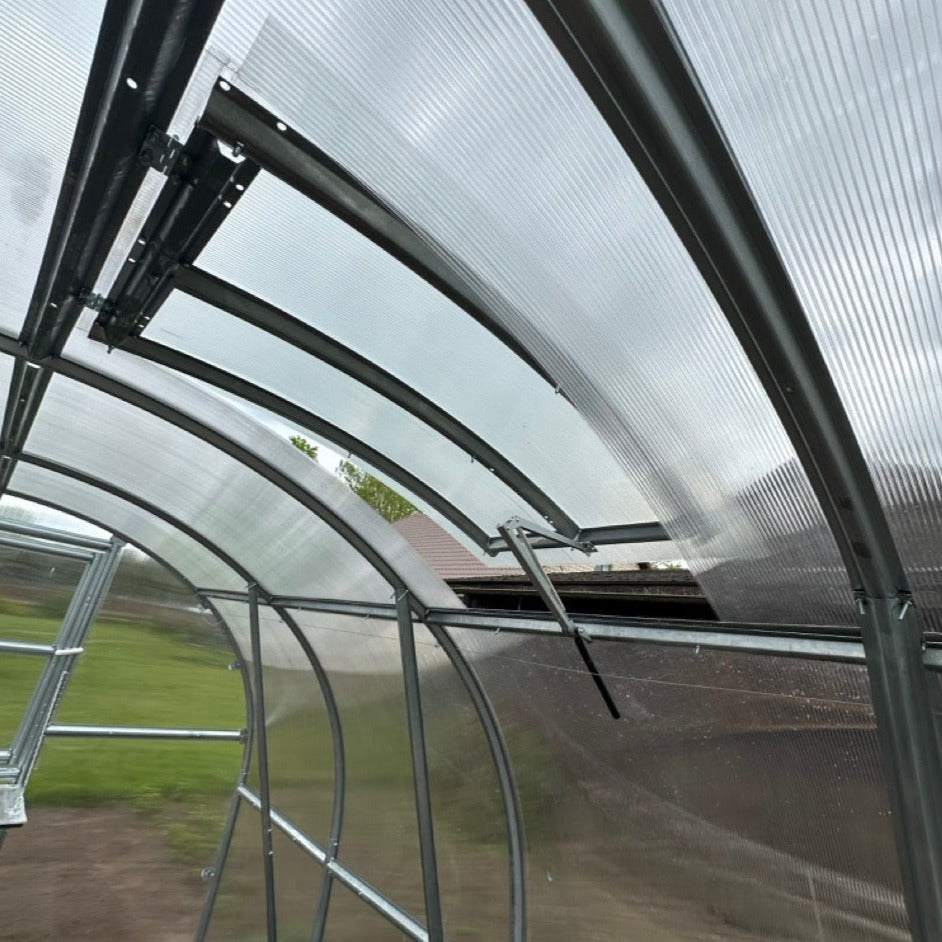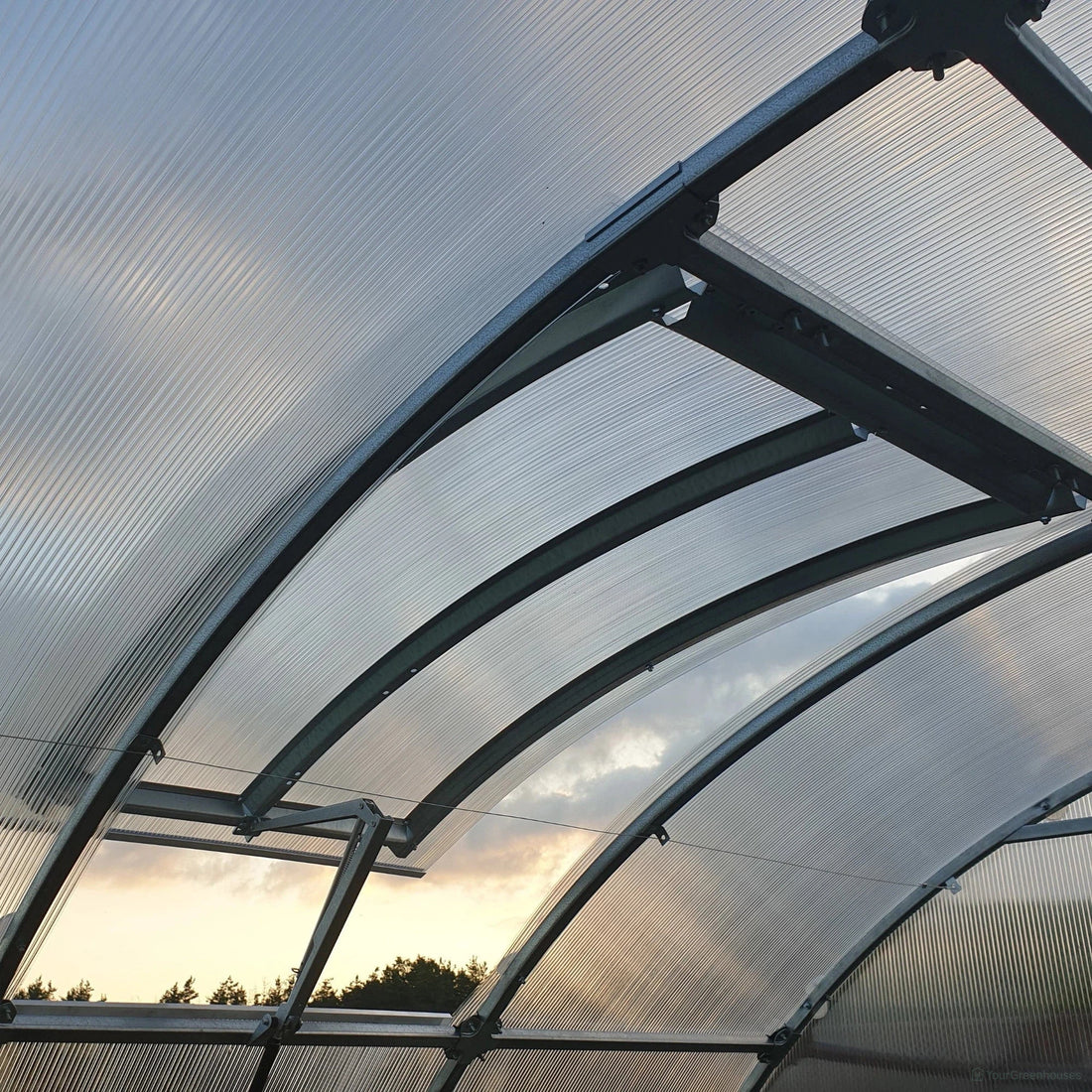Hydroponic Greenhouse: The Future of Sustainable Agriculture
Concerns about food security, environmental sustainability, and resource efficiency have grown lately. As a result, the old ways of farming have changed in big ways. Among these new ideas, hydroponic greenhouses have emerged as a beacon of hope, offering a solution that integrates technology, ecology, and efficiency in the cultivation of crops.
Hydroponic greenhouse farming represents a departure from conventional soil-based agriculture, harnessing advanced hydroponic systems within controlled environments to cultivate plants. By eliminating soil as a medium for plant growth and instead delivering essential nutrients directly to the roots through water, hydroponic methods optimize space and resource utilization, minimize water consumption and pesticide use, and mitigate the risks associated with soil-borne diseases and pests.
You can turn your regular greenhouse into a hydroponic greenhouse by purchasing a hydroponic kit. Hydroponic greenhouse kits are convenient and comprehensive packages that include all the necessary components and equipment to set up a hydroponic growing system within a greenhouse environment.
These kits are designed to simplify the process of starting a hydroponic garden, making it accessible to beginners and experienced growers alike. Here are some common components you might find in a hydroponic greenhouse kit:
- Growing system: This typically includes the hydroponic trays, containers, or channels where the plants will be placed. These systems are often designed for easy assembly and efficient nutrient delivery.
- Nutrient solution: Hydroponic kits usually come with a nutrient solution or mix specifically formulated to provide essential nutrients to the plants. These solutions may be liquid or concentrated powders to be mixed with water.
- Growing medium: Depending on the type of hydroponic system, kits may include growing mediums such as perlite, vermiculite, coconut coir, or rockwool, which provide support for the plants' roots and help retain moisture and nutrients.
- Water pump and tubing: Hydroponic systems require a water pump to circulate the nutrient solution through the growing trays or channels. Kits typically include the necessary tubing and fittings for setting up the irrigation system.
- Grow lights: LED grow lights are commonly included in hydroponic greenhouse kits since hydroponic greenhouses may not always receive sufficient natural sunlight (especially in indoor environments), essential for plant growth.
Key Considerations for a Hydroponic Greenhouse
When it comes to setting up a hydroponic greenhouse, there are a few major factors to consider for optimal productivity. They Include:
Space and Size
Selecting the right greenhouse size is essential to accommodate your available space and the desired plant capacity. Should your cultivation ambitions outgrow your current setup, purchase our greenhouse extensions crafted for seamless integration and effortless expansions, ensuring your greenhouse remains versatile and accommodating as your garden flourishes.
Water Management
Implement a reliable water management system to deliver nutrients to plants and maintain optimal moisture levels. Remember to monitor the pH, nutrient concentrations, and water quality. You can also add a recirculating system to help minimize water usage and nutrient waste.
Material
Most hydroponic greenhouses are made of either glass or polycarbonate, each with its own advantages and disadvantages. Glass is more durable and provides better insulation, but it is also more expensive and can be more difficult to install. Polycarbonate is less expensive and easier to install but less durable and can scratch more easily.
Lighting and Ventilation
Hydroponic plants require a specific type and amount of light and proper air circulation for robust growth. Some greenhouses have built-in lighting and ventilation, while others require purchasing and installing your own. If you own the latter, consider investing in our air vents designed to facilitate superior airflow management and ensure a healthy and conducive environment for plant development.
Hydroponic System Type
Choose a hydroponic system that aligns with your space, budget, and level of expertise. Common types include deep water culture (DWC), nutrient film technique (NFT), drip irrigation, and ebb and flow (flood and drain) systems.
Additional Features
Consider extra features like shelving, irrigation systems, or temperature control. These features can make growing your plants easier and help ensure their success. Elevate your greenhouse with our premium shelves and irrigation systems, meticulously crafted to work well with your setup, enhancing both functionality and aesthetics.
Should You Install a Hydroponic System In Your Greenhouse?
The decision to install a hydroponic growing system in your greenhouse should align with your goals, resources, and circumstances. Take the time to carefully evaluate the pros and cons, and consider consulting with experts or experienced growers for guidance tailored to your specific situation.
Ready to start your hydroponic greenhouse and revolutionize your cultivation experience? Contact us today for expert guidance.












